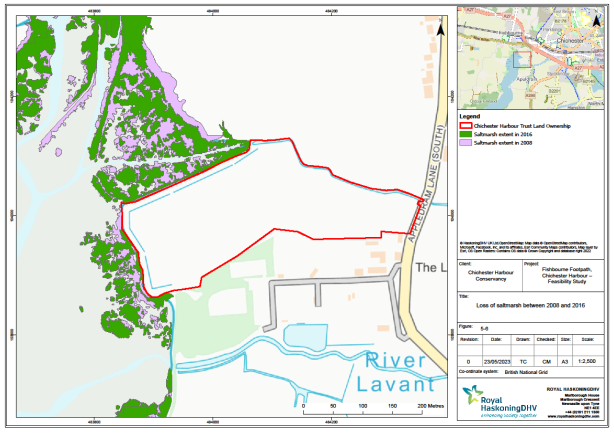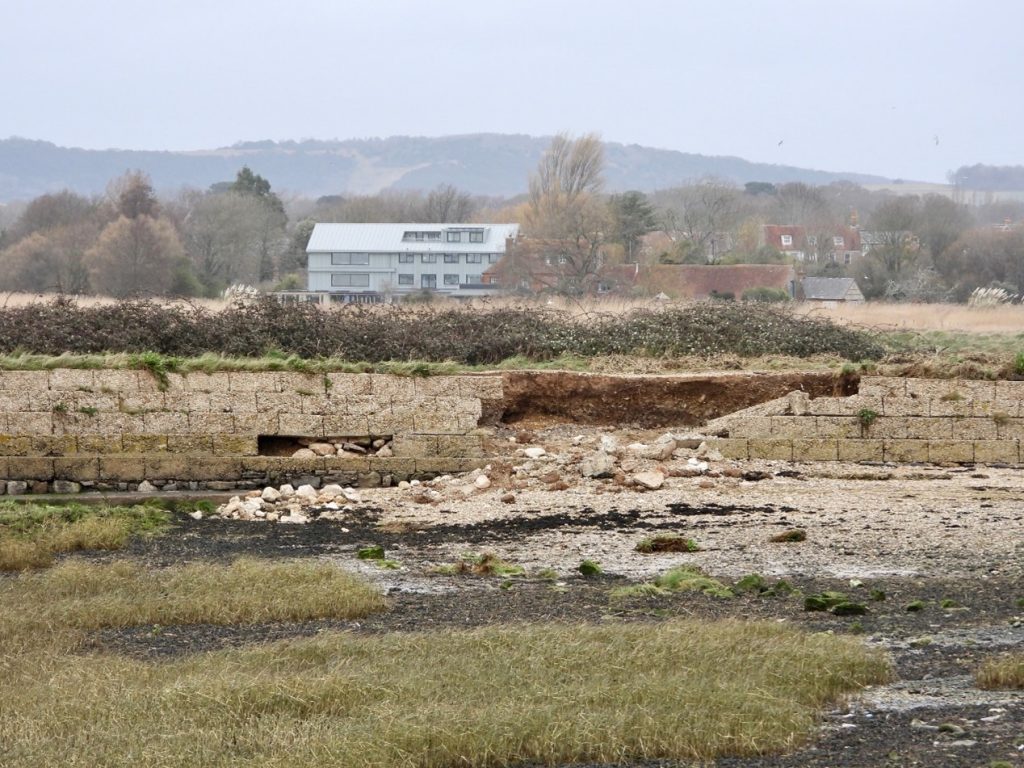Background:
In 2021 Natural England’s Condition Review downgraded the Chichester Harbour Site of Special Scientific Interest to “Unfavourable Declining”. This is primarily due to the loss of saltmarsh within the harbour (58% since 1945) through “coastal squeeze”. The presence of hard structures (such as sea walls) restricts the natural processes of the coastline and the landward movement of coastal habitats. As well as being a valuable and beautiful habitat, saltmarsh stores carbon, removes nutrients, increases biodiversity and reduces wave energy.
Following damage to the sea defences at Apuldram Meadow in 2022, the coastal footpath was temporarily closed for public safety whilst an assessment for the future management of the site was made. Chichester Harbour Conservancy together with the Environment Agency commissioned an independent consultancy to evaluate the condition of the existing defences and propose a range of solutions for their future management that aim to maximise environmental and recreational benefits.


The Options:
The consultants, Royal HaskoningDHV produced the feasibility study (which can be downloaded below). As experts in engineering solutions for a sustainable future, the three main options they considered for the site are:
1 – Do nothing.
- Take no action to repair the sea defences.
- This would result in unmanaged flood risk to local infrastructure.
- Although this is a low-cost option initially, there would likely be significant future costs to mitigate flood risk.
2 – Repair the existing sea defences.
- Maintain the current level of flood defence and reinstate the existing footpath.
- Much of the sea defences are deteriorating. These will require further repair works in the future when other sections of the sea wall fail.
- This option does nothing to address the “unfavourable declining” nature of the saltmarsh across Chichester Harbour.
- With the current rate of loss, all saltmarsh in the immediate vicinity will be gone within 30 years. This will have a knock-on effect on wildlife, bird populations, local ecosystems and biodiversity.
- A medium-cost option. There are likely to be further costs as other areas of the sea defences fail in the future.
3 – Realign the coastal path.
- Controlled realignment of the site, working with the natural topography to create new saltmarsh habitat. This would be achieved by managing breaches in the existing defences, or by removing a section of the embankment completely.
- Work with the natural topography to construct a new sea defence further inland. This will protect the Wastewater Treatment Works and other assets.
- Re-route the footpath on top of the new sea defence. This will maintain access across the length of the site and views across the Fishbourne Channel.
- In the short-term leave the northern embankment in place creating a causeway and lookout position into the Fishbourne Channel.
- A medium-cost option.
- This is a nature-based solution that will improve biodiversity in the immediate area.



What happens next?
- Chichester Harbour Conservancy will share the feasibility study and engage with local stakeholders. Together we will review the options and decide upon the next steps.
- There will be an opportunity to ask questions of the consultants, Royal HaskoningDHV at an online Q&A session. The date and time of this will be published in due course.
- In the meantime, should you wish to make any comments on the report, please email contact@chapron.org.uk.
